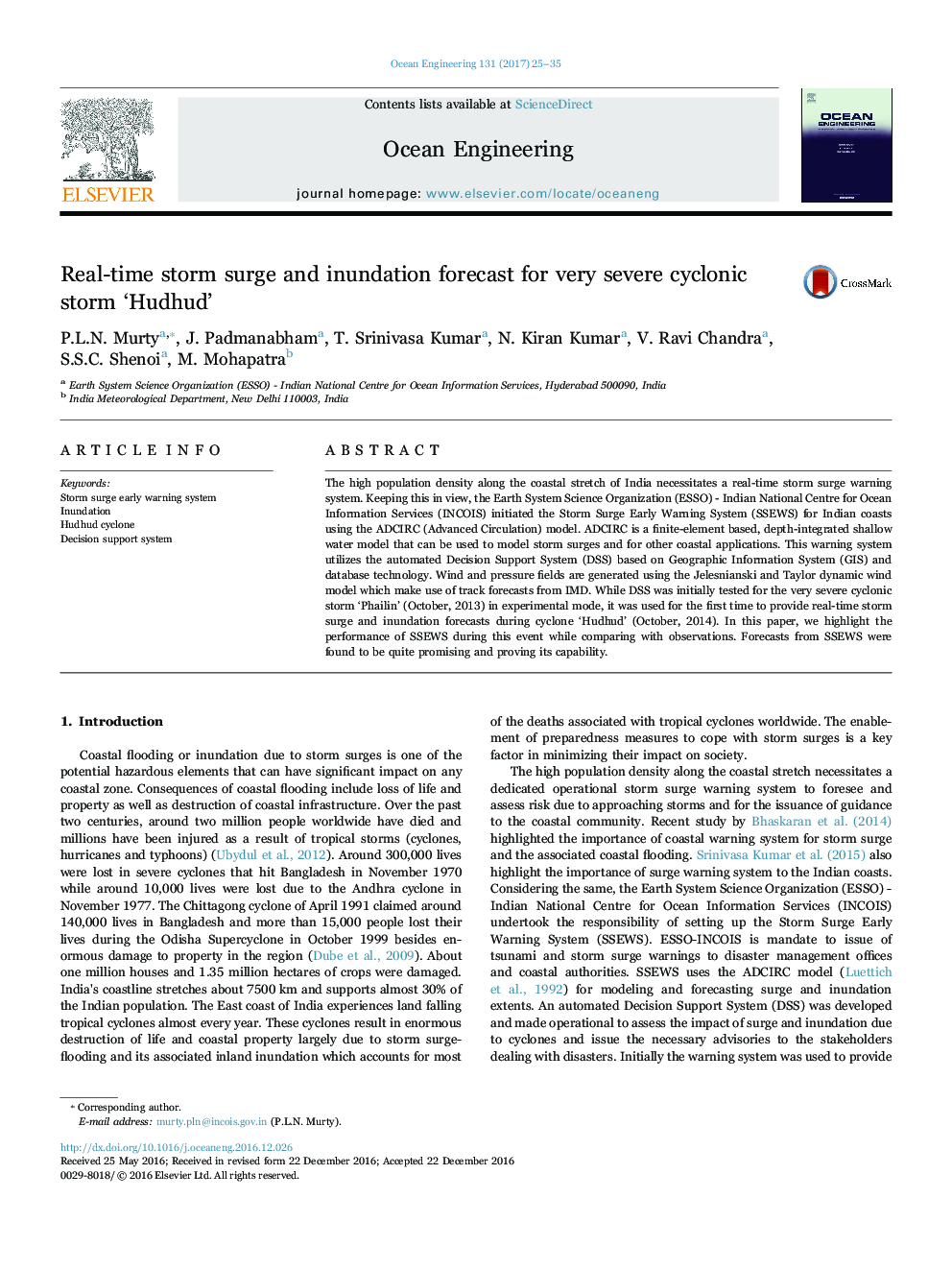| Article ID | Journal | Published Year | Pages | File Type |
|---|---|---|---|---|
| 5474524 | Ocean Engineering | 2017 | 11 Pages |
Abstract
The high population density along the coastal stretch of India necessitates a real-time storm surge warning system. Keeping this in view, the Earth System Science Organization (ESSO) - Indian National Centre for Ocean Information Services (INCOIS) initiated the Storm Surge Early Warning System (SSEWS) for Indian coasts using the ADCIRC (Advanced Circulation) model. ADCIRC is a finite-element based, depth-integrated shallow water model that can be used to model storm surges and for other coastal applications. This warning system utilizes the automated Decision Support System (DSS) based on Geographic Information System (GIS) and database technology. Wind and pressure fields are generated using the Jelesnianski and Taylor dynamic wind model which make use of track forecasts from IMD. While DSS was initially tested for the very severe cyclonic storm 'Phailin' (October, 2013) in experimental mode, it was used for the first time to provide real-time storm surge and inundation forecasts during cyclone 'Hudhud' (October, 2014). In this paper, we highlight the performance of SSEWS during this event while comparing with observations. Forecasts from SSEWS were found to be quite promising and proving its capability.
Keywords
Related Topics
Physical Sciences and Engineering
Engineering
Ocean Engineering
Authors
P.L.N. Murty, J. Padmanabham, T. Srinivasa Kumar, N. Kiran Kumar, V. Ravi Chandra, S.S.C. Shenoi, M. Mohapatra,
